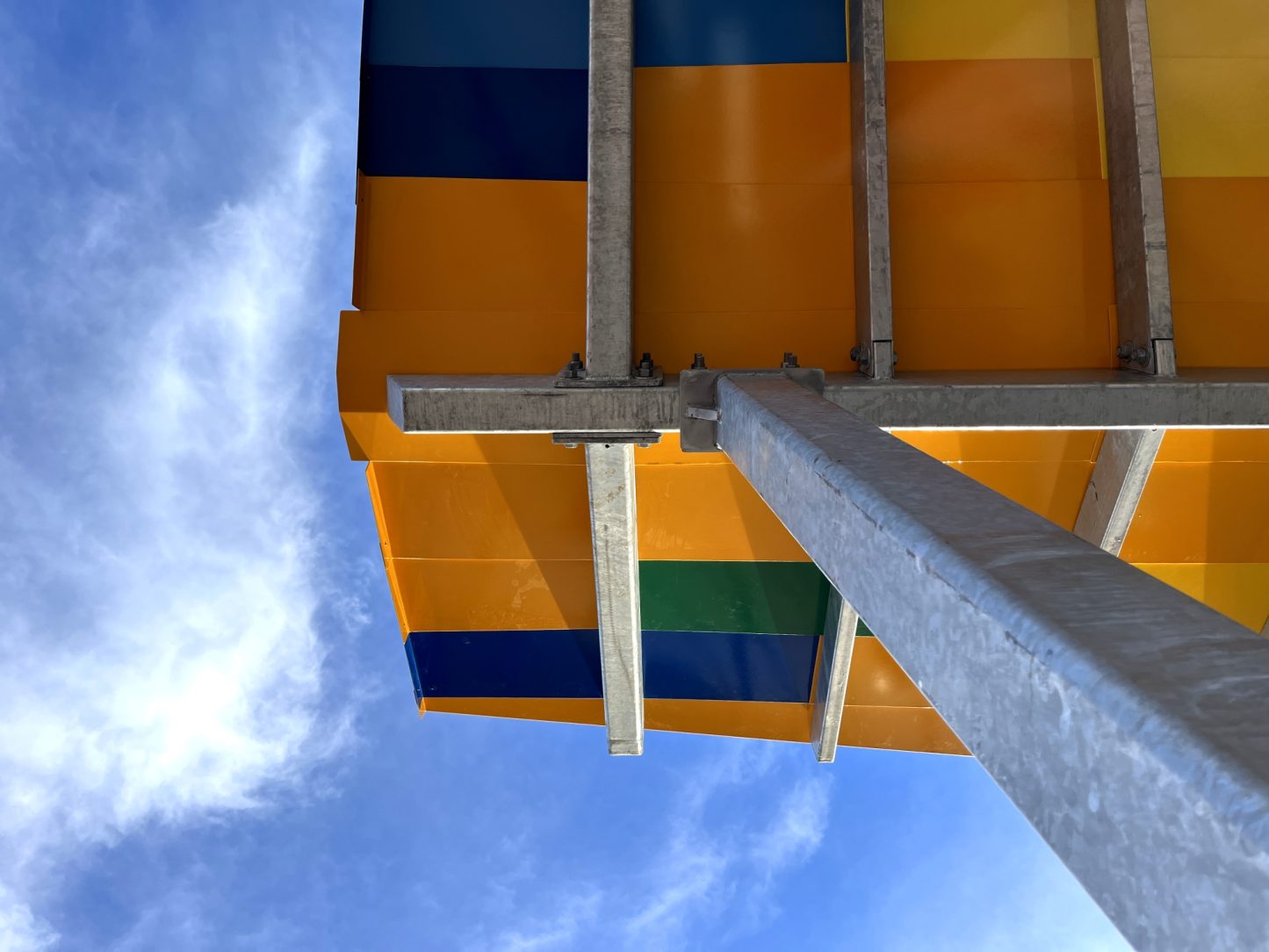LAWRENCE, KS UNITED STATES 2023
AZZ Galvanizing - Kansas City
"These projects are so rich with real-world content for the students,” Professor Van de Riet said. “I can’t imagine a better experience for them to get the holistic picture of what it takes to build even a relatively simple structure."
The Ryan Gray Playground for All Children was the first ADA accessible playground in the State of Kansas when it opened in 1993. The playground was built in memory of Ryan Gray – a disabled student at Hillcrest Elementary, where the playground is located. Although renovated and updated in the last decade, the playground has lacked shade. During the fall semester of 2023, KU Architecture collaborated with the Hillcrest Elementary Parent Teacher Organization (PTO) to fundraise, design, and build a new shade pavilion adjacent to the playground.
The pleated form of the pavilion follows the existing curved concrete slab and picnic benches to seamlessly blend in with the existing playground. The colorful roof tiles complement an already vibrant playground and reflect the international heritage of the student body at Hillcrest Elementary. The existing playground signage is framed by the roof and columns of the new shade pavilion to strengthen the unique forms already present at the site.
From the beginning of the project, USD 497 requested the pavilion be low maintenance, due to an already stretched thin workforce providing upkeep across the district’s properties. The longevity of hot-dip galvanizing, particularly in the Midwestern climate, was an attractive option to ensure the project would be maintenance-free for decades.
An existing relationship with the nearest galvanizing plant ensured the project would be done with the utmost concern toward quality and finish for this community-based project. Throughout the project, architecture students learned the standards and expectations for hot-dip galvanizing and developed drawings and diagrams to indicate lift points and vent holes to ensure a successful process. These drawings were shared with the galvanizers to determine any additional vents and to collaborate on the aesthetic impact on those vent locations. In most cases, the vent holes were determined to also provide moisture drainage in the final structure.
In short, by collaborating with the galvanizers, the project had a final appearance that exceeded expectations and benefitted from the early conversations. Both parties had vested interest in the project, and the community was improved as a result.
This project was powered by CIC Pittsburgh Galvanizing furnace technology.
